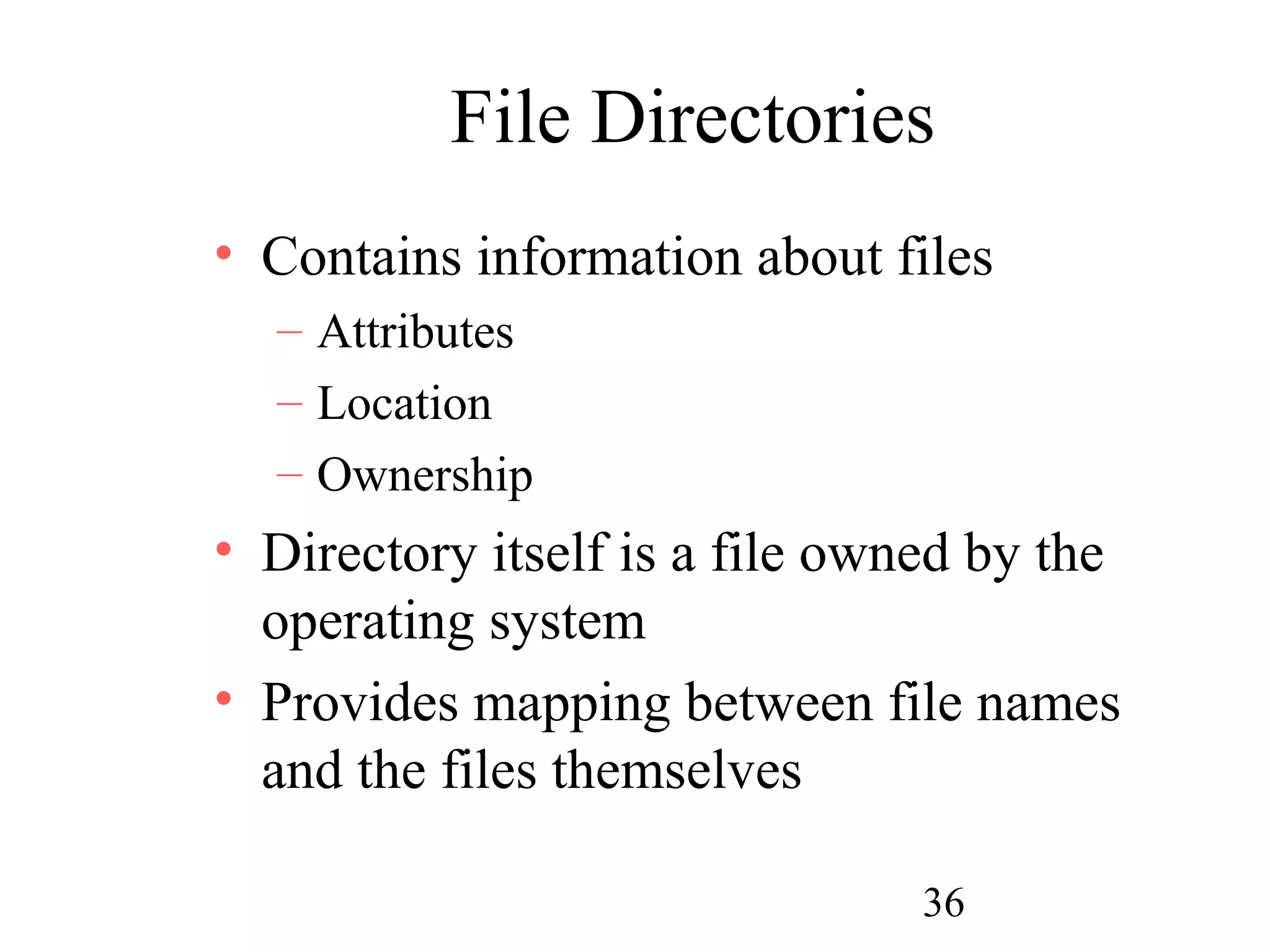The document discusses file management systems and file organization. It describes the components of a file management system including file system utilities, input/output files, and long-term file storage. It then covers various file organization methods like sequential, indexed sequential, and direct files. Finally, it discusses file directories, sharing, and access rights.













































































